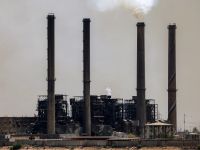Dubai had the highest hotel room occupancy levels in the Middle East and North Africa (MENA) region in April, according to a new EY report released on Tuesday.
Average occupancy levels in the emirate stood at 88 percent. Dubai enjoyed the highest average room rate of $310 (Dh1,138).
EY’s April 2017 MENA Hotel Benchmark Survey Report also identified an 18.7 percent increase in revenue per average room (RevPAR) — an industry benchmark for performance — in Dubai compared to the same period last year.
This is in contrast with the region’s average, which saw RevPAR decline.
The report attributed Dubai’s strong performance to numerous corporate events, such as the Arabian Travel Market and the Arabian Hotel Investment Conference, which attracted visitors from across the MENA region and may have helped boost the city’s hotel performance.
On the other hand, Abu Dhabi posted disappointing results in the report, with the capital’s hospitality market witnessing a drop in RevPAR of 4.8 percent in April 2017.
This can be attributed to the drop in average room rate from $133 in April 2016 to $120 in April 2017.
However, occupancy increased by 4.5 percent to 84.5 percent in April 2017 when compared to the same month last year.
In a statement, Yousef Wahbah, MENA Head of Transaction Real Estate at EY, said: “With the start of Ramadan at the end of May, it can be expected that MENA cities will experience a softer performance until the Eid holidays at the end of June.”
Elsewhere in the region
In Muscat, meanwhile, the hospitality market witnessed an increase in average occupancy of 7.7 percent when compared to the same period last year. This may be a result of the spring break and Easter holidays where expats from neighbouring countries considered the city to be an ideal short getaway, Wahbah said.
And in Saudi Arabia, Riyadh’s hospitality market continues to witness an overall drop in performance month over month. RevPAR dropped from $130 in April 2016 to $106 in April 2017, as per EY estimates.
Amman’s hospitality market witnessed a decrease in RevPAR of 5.3 percent in April 2017 over the same month last year.
Beirut, on the other hand, benefited from the spring break and Easter holidays as occupancy increased by 13.2 percent to 68.8 percent, the average room rate increased by 14 percent to $148, and RevPAR jumped by 40.9 percent to $102 when compared to the same month in 2016.








